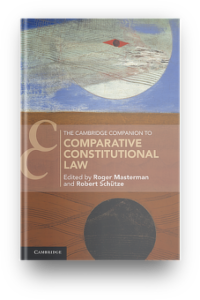From its beginnings as a relatively obscure and exotic subject studied by a devoted few, comparative constitutionalism has developed into one of the more vibrant and exciting subjects in contemporary legal scholarship, and has become a cornerstone of constitutional jurisprudence and constitution- making in an increasing number of countries worldwide. This tremendous renaissance in comparative constitutional inquiry reflects a confluence of factors. Chief among them are extensive democratization and constitutionalization trends worldwide; the internalization of the legal profession and of legal education; and the rise of communication and information technologies that facilitate considerably the diffusion of constitutional concepts, and foster cross- national jurisprudential dialogue. The result has been an ever- expanding interest among scholars, judges, practitioners and policymakers in the transnational migration of constitutional ideas, and in the comparative study of constitutions and constitutionalism more generally.
And yet, despite this tremendous renaissance, and in stark contrast to other areas of research that define themselves as comparative (including comparative constitutional law’s neighbouring fields – comparative law and comparative politics – both of which sport extensive and sophisticated methodological debates), the methodological, research design, case selection and data analysis aspects of comparative constitutional inquiry – how should we study constitutionalism as a distinct phenomenon with multiple forms and manifestations across time and place – remain largely undertheorized and until recently, seldom discussed.
In the following pages, I outline a few elements that are vital to understanding the array of comparative methodologies deployed in the study of constitutions and constitutionalism across time and place. Such understanding, I suggest, is essential for sustaining the current revival of comparative constitutionalism as a distinct and valuable area of scholarship. The discussion proceeds in three main steps. I begin with two basic distinctions concerning the meaning of the ‘comparative’ in comparative constitutional inquiry: (i) the various epistemological branches of constitutional law scholarship and the comparative angle in them; and (ii) the various professions and stakeholders engaged in comparative constitutional inquiry and their different aims and practices. In the second part, I identify and discuss the main methodologies and research designs commonly deployed in comparative study of constitutions and constitutionalism
across time and place.
These various approaches to comparative inquiry may be distinguished from one another based on their aimed level of abstraction and generalization, and include the generation of encyclopaedic knowledge, classifications or taxonomies; self- reflection through analogy and contrast; concept formation through multiple description; idiographic studies that aim to produce in- depth understanding of given constitutional setting; and nomothetic studies that draw on controlled comparisons to formulate and test hypotheses with some general applicability to the comparative constitutional universe. In the third part, I address some of the structural and disciplinary difficulties embedded in the comparative constitutional inquiry and point to the rise of cross- disciplinary, multi- method and collaborative research as providing a set of plausible solutions to some of these challenges.
The upshot of the chapter is threefold: (i) there is no magic bullet or one- size- fit- all research design ‘formula’ for a field as rich and diverse as comparative constitutional studies; therefore, methodological pluralism is an asset and a necessity; (ii) the sensibility and rationality of comparisons boil down to the concrete perimeters of any given comparison, the scope and nature of the substantive claim they purport to advance, and whether the case- selection criteria and research methodologies deployed are properly tailored to suit the theoretical or empirical question a given comparative study is set to address; and (iii) ultimately it is the comparative element that separates comparative constitutional law from its older, more established, supposedly self- contained and undoubtedly less cosmopolitan sibling – constitutional law. Hence, an understanding of the ‘comparative’ in comparative constitutional law – its various rationales, methods, limitations and possibilities, alongside the contours and contents of the audacious comparativist’s toolkit – is essential for the field’s renaissance to persist.
